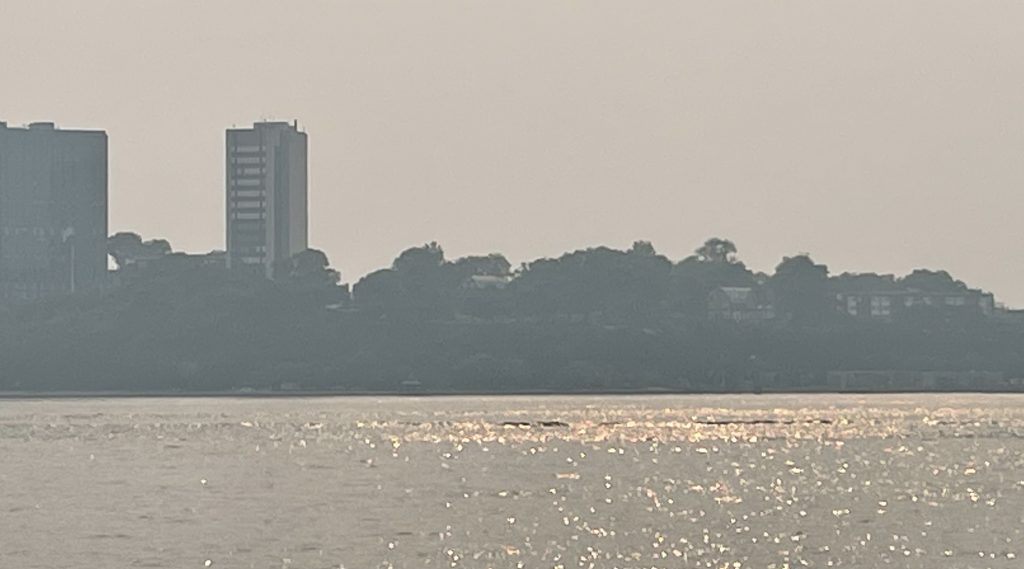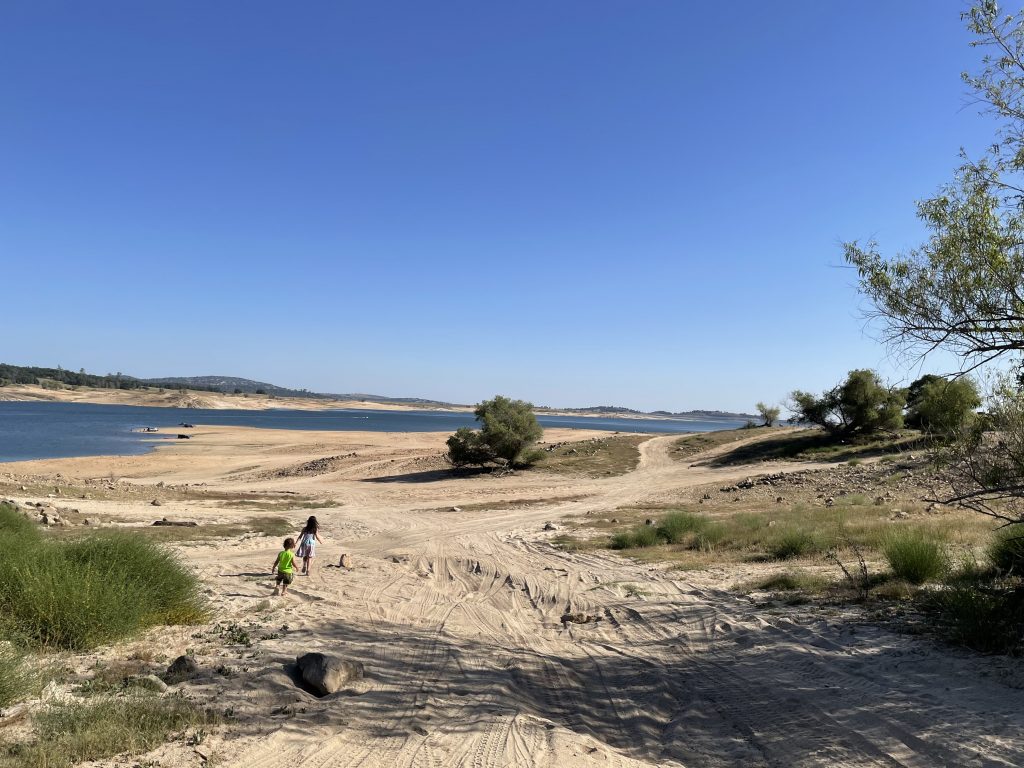By Pamela Berns

With unprecedented flooding, record breaking heat, and rapidly spreading wildfires, loss and devastation monopolize the headlines. Even those of us who have remained gratefully safe are seeing our lives change in more subtle ways, as our plans literally shift with the winds. Here’s one family’s story.
A friend once told me you should never follow your kids when picking a place to retire. Since by then you are old and wanting to settle down, and they are young and have many opportunities ahead of them, you could find yourself alone all over again after packing all your stuff and shipping it clear across the country.
The thing is my husband and I had been eyeing California since we moved “back east” from LA three years before our son Ben was born. Ben’s relocation to the Sierra Foothills years later gave us a good reason to move the idea onto our bucket list. He’d gone to law school in San Francisco, where he met his wife Linda, and we visited often. It wasn’t long before we fell in love with everything about the northern part of the state—the rocky shores, the verdant valleys and hills, the towering mountains and crystal clear glacial lakes.
Once my granddaughter Ariel was born in 2014, the idea went straight from the bucket into an actual retirement plan. In a few short years, we would leave our New York apartment and settle out west. Linda cautioned us (half joking?) not to move too close to the coast. “It’s just a matter of time before San Francisco is under water,” she said, “and you could end up being climate refugees without flood insurance.”
In October 2017, during a visit to Ben’s, I decided to take the 75-mile drive to Sonoma County to see my college buddy. After a hike in Petaluma, I met Ellen for lunch at an outdoor cafe a few miles from her home in Santa Rosa. The sky was clear, and there was a light breeze; it was the kind of perfect autumn day that only happens in Northern California. As she walked me to my car, Ellen suggested I spend the night at her place, but something told me I shouldn’t. It wasn’t just that I’d hoped to beat the Friday bottle neck on Route 37; I had this nagging feeling I needed to get back that day, and that staying any longer would just be a bad idea. I found a scenic route through the woods that skirted some of the usual traffic, but moved at a snail’s pace as the road narrowed along the marshlands. A blessing in disguise, I thought, as some of the most beautiful shorebirds nest along that stretch. I arrived at Ben’s after dark, just in time to read bedtime stories to Ariel.
That night we slept, as we always did at Ben’s, with the windows open, to take in the cool California night air, something we never do in New York, because of the 6am cacophony of garbage trucks. We were awakened early, not by the smashing of bottles being recycled outside our bedroom window, but by the faint and unmistakable smell of smoke. At first I thought it had lingered from a neighbor’s cookout from the previous night.
As I headed out of our bedroom, I found Ben closing the living room windows. “Something’s burning up North,” he said, pulling shut the sliding door to the yard. I flashed on something that had crossed my mind on my hike the day before. The grass on the miles of rolling hills was as golden and dry as bales of hay. “Just one spark…” My unease at staying at Ellen’s turned out to be a premonition: Santa Rosa was burning down.
Ellen was spared as the fire halted just east of the freeway, and she lived just west. But it was weeks before she could spend any time outdoors and months before she stopped grieving the loss of homes, historical buildings, and of lives. Dubbed the Tubbs fire, it was, at the time, the most destructive wildfire in California history. It destroyed more than 5,600 structures, burned around 36,800 acres in three counties, and killed 22 people. The greatest losses were in the city of Santa Rosa.
The next afternoon, the noxious particles from the Tubbs fire continued their wind-borne journey to Ariel’s neighborhood. We stayed indoors and looked out the closed window at the strange red ball hanging in the muddy brown sky, instead of playing in the yard as we usually did after school. Ariel said it looked like a “nighttime day on a different planet.” As additional fires encircled the area, her swimming lesson was canceled and the playgrounds were closed, but, thankfully, not a flame touched her community. Eventually the winter rains quelled the fires and the smoke blew away, and life went back to normal for Ben’s little family. While the papers reported that Southern California homes were now sliding down mountains, as heavy downpours soaked their charred and unstable foundations, Ben and Linda carried on in the kind of denial you need to keep going when life gets too scary.

In 2018, on Veterans Day weekend, three generations met in Chicago for a family reunion. We celebrated my husband’s birthday, and my recently widowed 97-year old mother-in-law Esther met her new two-month old great grandson for the first time. The children filled her house with a joyful chaos that successfully distracted her from her loss. Esther was thrilled as we disrupted her routine completely, a welcome departure from her usual repetitive days of pills, one dish meals, bathroom visits, and occasional drives to the doctor’s office. With one exception: the TV news, taken in four equal daily doses at an intolerably loud volume, was non-negotiable.
The “Camp Fire” in Northern California has scorched some 130,000 acres and is 35 percent contained, according to officials Tuesday night. In addition, the “Camp Fire” death toll has now reached 48. Some 9,000 firefighters have been battling the wildfires, which have become the deadliest and costliest in state history. Search teams have been using power saws and cadaver dogs to try to locate victims of the “Camp Fire.”Those who survived have been scrambling to find a place to stay. CBS News 11/14/2018
This time it was Paradise that was burning. Just under 100 miles from Benjamin and Ariel’s home, it was impossible to take in the magnitude of destruction taking place in this town, whose hopeful name had come to stand for utter despondency. Ben immediately posted to Facebook that he had room to temporarily house refugees, while Linda, still on maternity leave, worked with United Airlines to move back the reservation for herself and the two kids by a week. The air quality report in their town was at black, dangerous for young children, and she had just received an email that Ariel’s school would be closed until further notice. Ben had to return home for work the next day, and to change the air filters in his house. His friend dropped off an extra gas mask.
When Linda and the kids finally arrived at home a week later, the air quality had turned to orange, and then yellow. Soon the winter rains arrived, and by Thanksgiving the needle had moved to green—something to be truly thankful for. But this time, it all felt too real to deny, and Linda and Ben decided to start their search for a new home. They were thinking Wisconsin, where Ben had been an undergraduate, and whose bar was reciprocal with California’s. It was an idea they’d floated before Ariel was born, kind of a bucket list item that grew out of Ben’s nostalgia for his college days. But now it had moved from the bucket into a plan.
But uprooting two kids and two careers isn’t simple, especially when it’s interrupted by a pandemic, and, for now, our children are still in the Foothills. Meanwhile, California’s fire seasons have started earlier and earlier and ended later and later, accompanied by longer and more intense periods of unprecedented extreme heat and drought. In the fall of 2019, another, even bigger fire, enveloped the Santa Rosa area.
Fueled by powerful winds, the massive Kincade fire continued its southwest march across Sonoma County, burning winery properties and threatening to jump Highway 101 as more than 2 million people across the region were thrown into darkness because of Pacific Gas & Electric Co. blackouts. Gov. Gavin Newsom declared a statewide emergency Sunday as wildfires spread throughout California.
Los Angeles Times 10/27/2019
By the time the Kincade fire had been reduced to embers, it had burned 77,758 acres, forcing evacuations of more than 180,000 people. Ellen was one of them, and she didn’t return home for nearly a week.
Then 2020 brought not only COVID but another record breaking year for California wildfires—9,917 fires burned a total of 6,653 square miles by year’s end. Children all over the US had moved home from school, but while parents here in New York found refuge in local parks, my grandkids stayed indoors with the windows closed, along with the two new air purifiers their dad had bought just before supply completely ran out. The vegetables sprouting in their yard moved to containers indoors, to be nurtured and eventually harvested on the kitchen table. With virtually no rain, their solar panels sent extra power to the grid, and their electric car sat fully charged in the garage with no place to go.
In 2021, the COVID vaccine gave my husband and me the freedom to finally visit our kids and grandkids after nearly a year and a half of lockdown on opposite coasts. Being together again sparked immense joy, but our reunion with Northern California was tinged with sadness. We hiked around frighteningly shrunken lakes and reservoirs in once lush landscapes the drought had rendered primordial. The day we headed to our favorite park to see the wildflower bloom we were greeted instead by a wildfire warning and a barricaded road. We should have recognized the familiar signs, the dry, hot winds of summer that would fan the fires. But it was only April, and already California was well on its way to breaking the 2020 record for numbers of fires and acres scorched. Ironically, around the same time, Wisconsin declared a State of Emergency due to wildfire producing weather conditions there.
National Geographic wrote that climate change has “inexorably stacked the deck in favor of bigger and more intense fires across the American West.” The NYTimes reported that the extreme fires in June and July of this year would have been “all but impossible” without climate change. As of July 13, after record breaking heat that reached 140 degrees in California’s Death Valley National Park, nearly 918,000 acres were burned by 67 large fires across the Western United States. Within days, smoke from the west traveled as far as east as New Hampshire, stopping to deliver and air quality index of over 100 to New York City. By July 30, the numbers had increased to more than 80 large fires, scorching over 1.7 million acres.
I recently told Linda, who had long stopped emailing us house listings in their area, what my friend had said about retiring near your children. “I would have disagreed not so long ago,” she said. “But that was before we all became potential climate refugees.”
Excerpted and adapted by the author from a collection of essays.
©2021 Pamela E. Berns All Rights Reserved
Interested in learning more about climate change? Check out our upcoming August Monthly Careers event to learn more.
